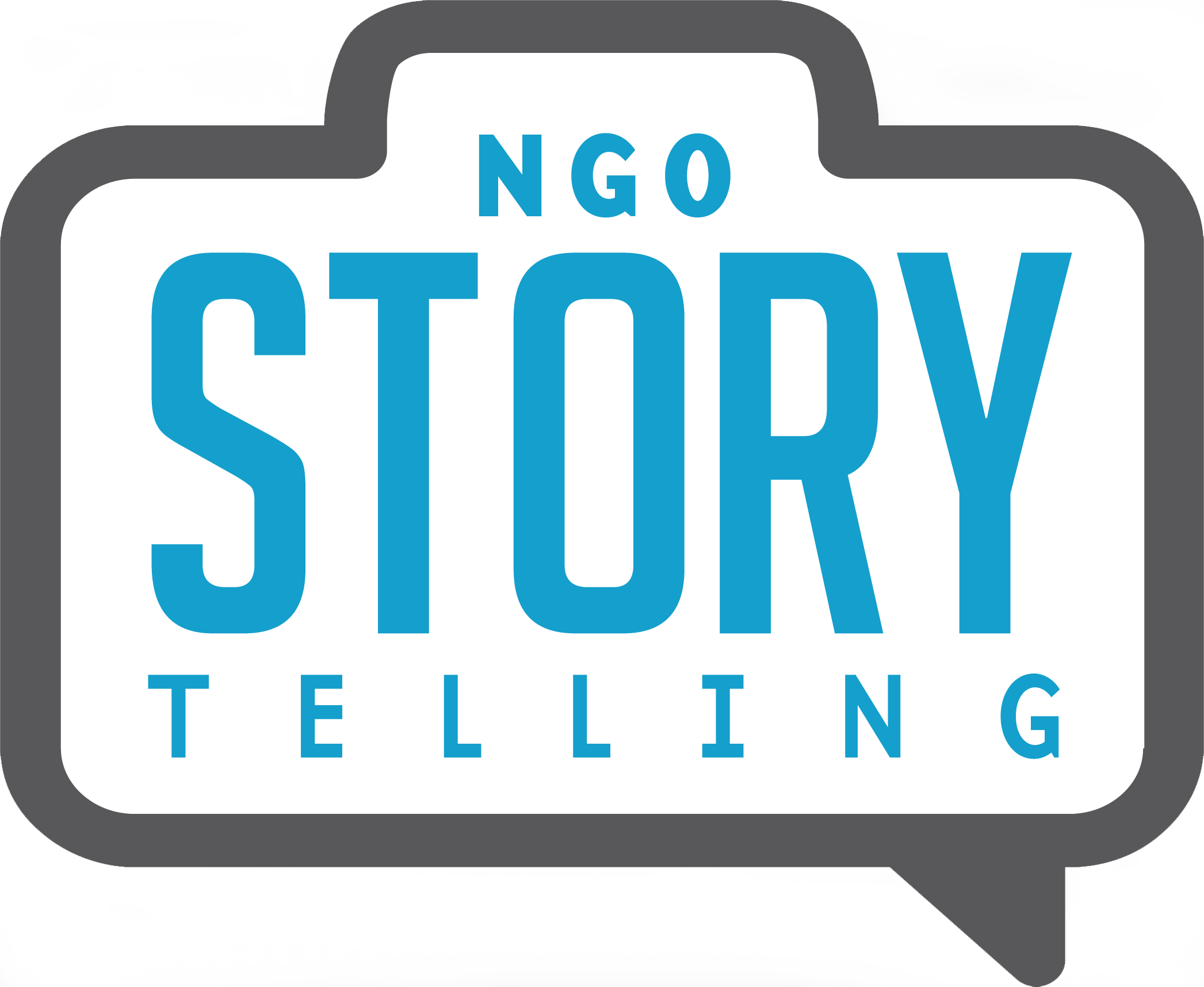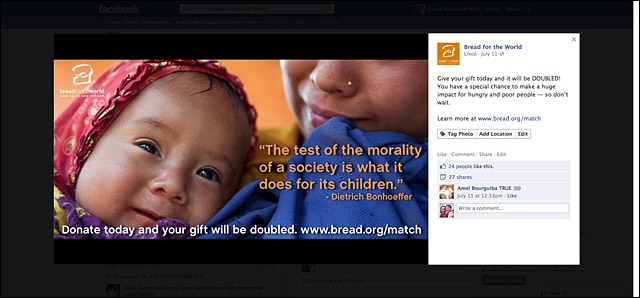5 Ways NGOs Should Be Using Story Assets
You're sent to the field to take pictures and get quotes from project participants. The story runs on your organization's blog and then you never again see those assets -- the photographs, quotes, soundbites and video you produced. All that work, just for one blog post? No. I'm a big believer in ensuring story components are used in more than one way. Here are some ideas based on my work at Bread for the World and what little relevant research I've found about social media, storytelling and nonprofits (hint, hint, communications researchers, we need your help).
1. Pictures in Facebook fundraising campaigns
It's a fact of NGO life that one of the main reasons we collect photographs is to use them for fundraising. Raising money through social media is on the rise, usually with pictures, but you can't just superimpose text on a photograph, upload it to Facebook and expect money to roll in.
I recently collaborated with Bread for the World's Mallory Moser, the online fundraising manager, and Jeannie Choi, the online editor, to create a Facebook component to our recent email and print fundraising campaign. It was our first time experimenting with this and I won't lie -- it was a bit of work. I researched picture possibilities while Jeannie and Mallory worked on finding quotes and writing simple text to Photoshop onto the pictures. We also thought about picture size: Should the photo be a square, so it shows up perfectly in everyone's new FB layout feed, or should it be more banner-like, so people would have to click on the picture to see the whole thing? We chose the latter.
I designed three picture ads, which took me about four hours, but we axed one and I created a replacement because the original photo/text combination looked weird. Lessons I learned or re-learned from this campaign:
1. People love pictures of babies. 2. Create a URL exclusive to the Facebook campaign so you can track metrics. 3. You should always have someone or some people look over your design. 4. Collaboration is key. You will often create something better together than on your own.
2. Stories in emails As long as we're on the subject of fundraising, let's talk about using stories in fundraising emails.
Last year at Bread for the World we inadvertently experimented with this. I had approached Mallory about focusing on real stories in our year-end email fundraising campaign. She agreed it was a good idea, so she and I and my former colleague Molly Marsh settled on four stories Molly and I had reported on during 2011. Each story would become one email that described a certain person and his/her struggle with hunger or poverty. Each email also had a picture that linked to a photo gallery. We spent a few weeks writing and editing, and editing through photographs.
At the last minute, for reasons I can't remember, we switched out one story email with a non-story email. I now think of that non-story email as our accidental control. After the campaign ended, we looked at the metrics and found that the story emails had higher open and click-through rates than the non-story email.
Obviously, this was in no way controlled scientific research. There could be a number of reasons the story emails fared better than the non-story email, including email subject line and the time of day we sent each email. However, this anecdotal evidence did convince me and Molly and Mallory that stories are essential in fundraising campaigns. We're not alone in that conclusion.
3. Researchers' presentations If your organization is like mine, you've got technical experts, researchers and possibly community organizers giving presentations and workshops everywhere. Quotes, pictures, videos and audio soundbites could help your colleagues make a good presentation great. Make sure they know about the human-interest stories you've collected, the assets available to them and how to get to those assets. Consistently archiving all word and audio stories in one place (perhaps a share drive?), photographs in another place (maybe Flickr?) and videos in yet another place (YouTube or Vimeo) makes it easy for your colleagues to find assets. Then, when you add new content, all you have to do is email everyone letting them know there are new word stories or pictures in their usual places.
Researchers and organizers at Bread have shown videos in their presentations and told me later that people cried or laughed and became engaged in the issue in a way they hadn't seen before. A couple weeks ago, a visitor walking near my desk saw a picture of two people from a Bread video and said, "It's Alli and André!" Stories stick, especially stories with great characters and interesting narratives.
4. Quotes on Twitter to promote the story or your organization's work I don't see a ton of NGOs doing this on a regular basis but my personal experience has shown quotes are popular and can drive traffic to web pages. Sometimes I tweet a story -- not just from Bread, but from other organizations, too -- using the story headline and a link to the text. Then I tweet the story again using a compelling quote from one of the story characters and a link to the text. Nearly every time, the quote tweet gets more clicks than the headline tweet. I wish I had more than anecdotal evidence to support my experience. But again, there seems to be very little research in this area.
5. Give your story assets to the people in your stories This one is very simple and highly appreciated but not often done. I know it can be time-consuming to burn discs, print pictures or convince a colleague to pack a stack of hefty annual reports in their suitcase for a field visit to rural Kazakhstan. But it is so worth it. I believe it's also the right thing to do for people who have given their time and stories to me.
Last year I received a handwritten letter from Marvin Garcia Salas, a man I filmed and photographed in rural Mexico in late 2010. He thanked me for the pictures and the video I sent. He hadn't ever seen himself on film and he couldn't believe the quality of the story. He was very happy and grateful. It warmed my heart knowing he got to see and keep the results of our time together.
By the way, one of my tricks for quickly getting story assets to the people I've filmed and photographed is to travel with 20-25 blank DVDs. This allows me to immediately burn pictures and videos and hand over the discs to the program manager. If I don't have the time or electricial capacity to do that, then I try to burn DVDs and send them to the field site within 2-3 months of arriving back in the United States.
***How does your organization use story assets? Let me know in the comments.***

